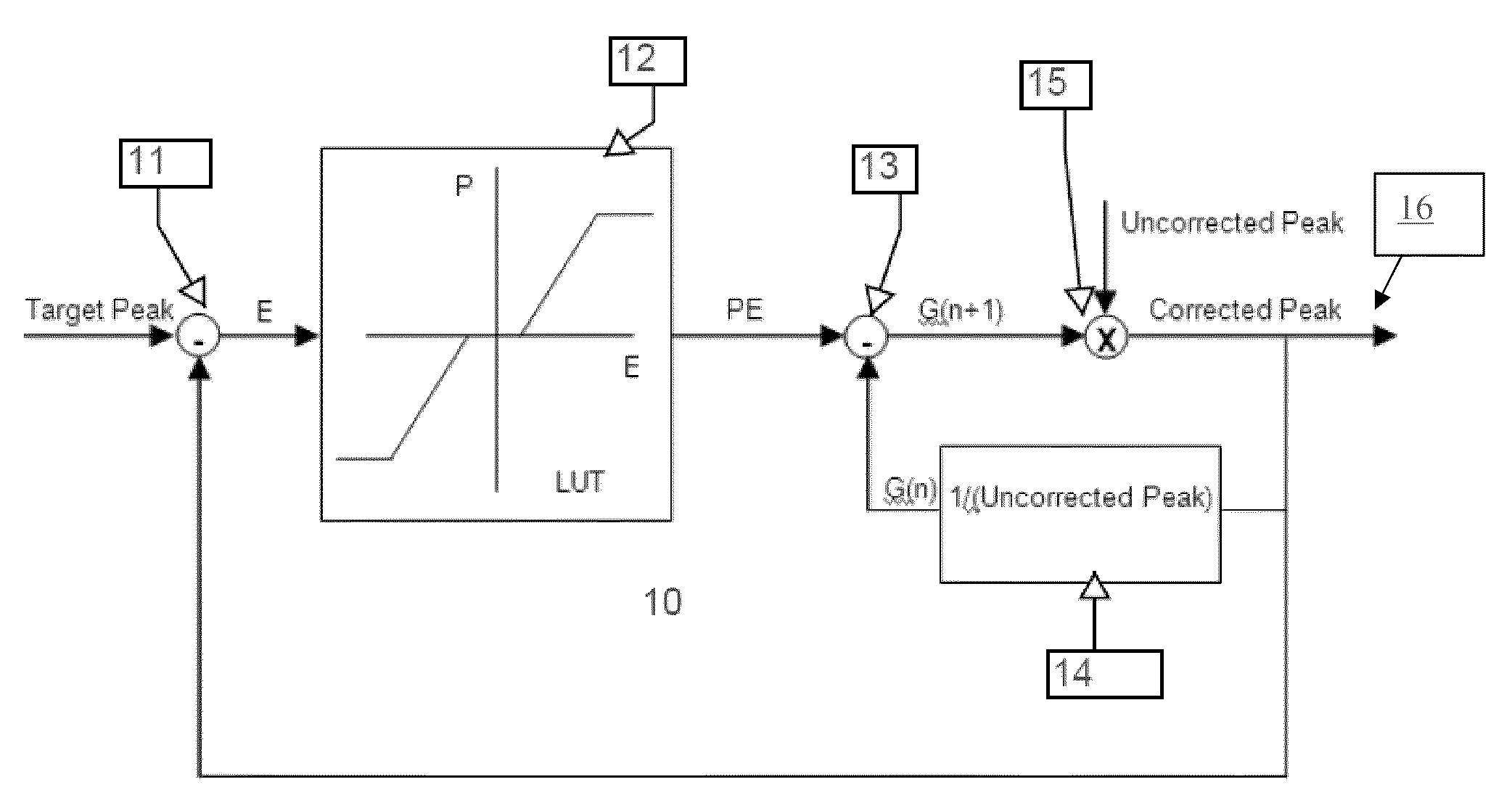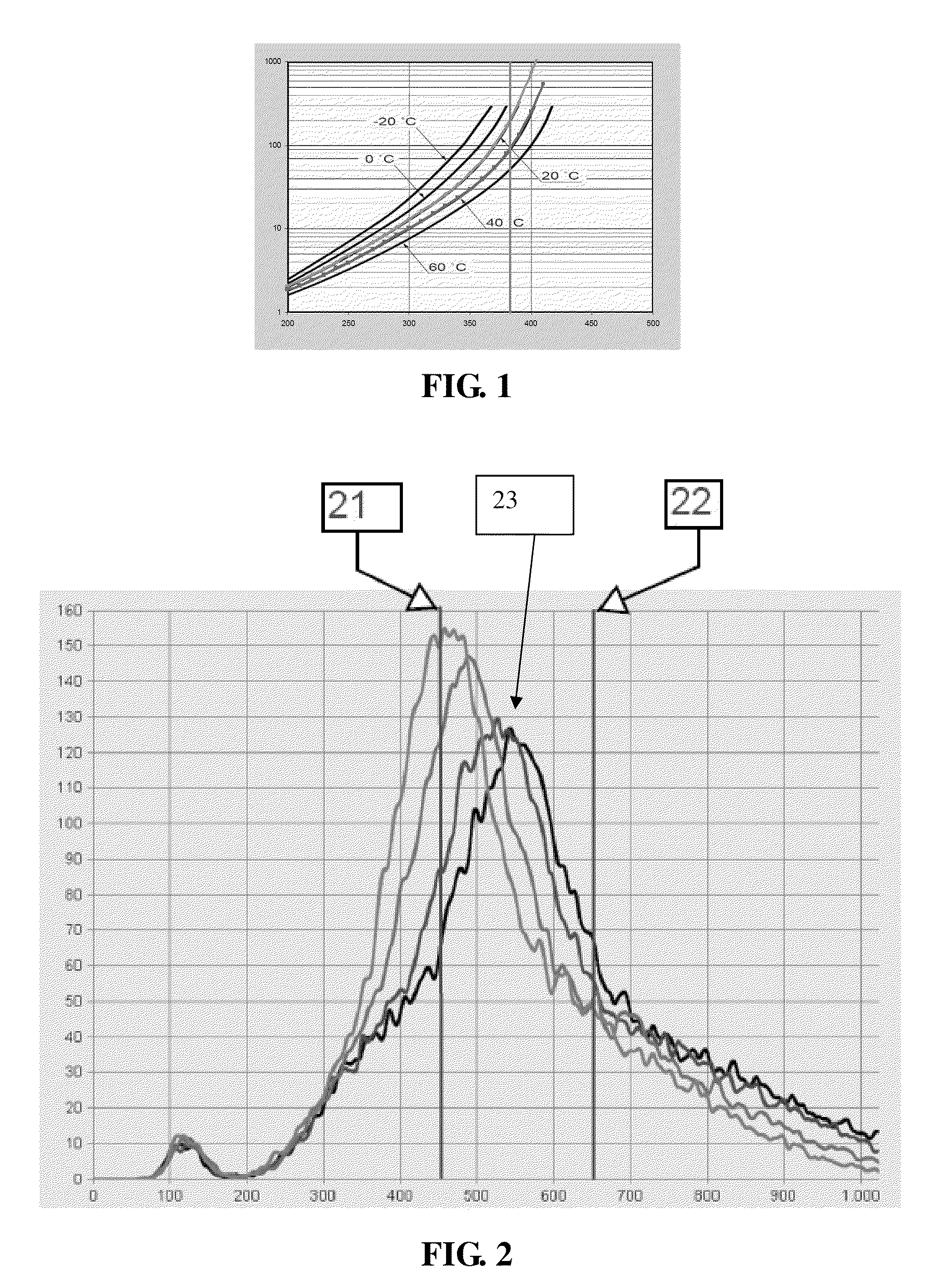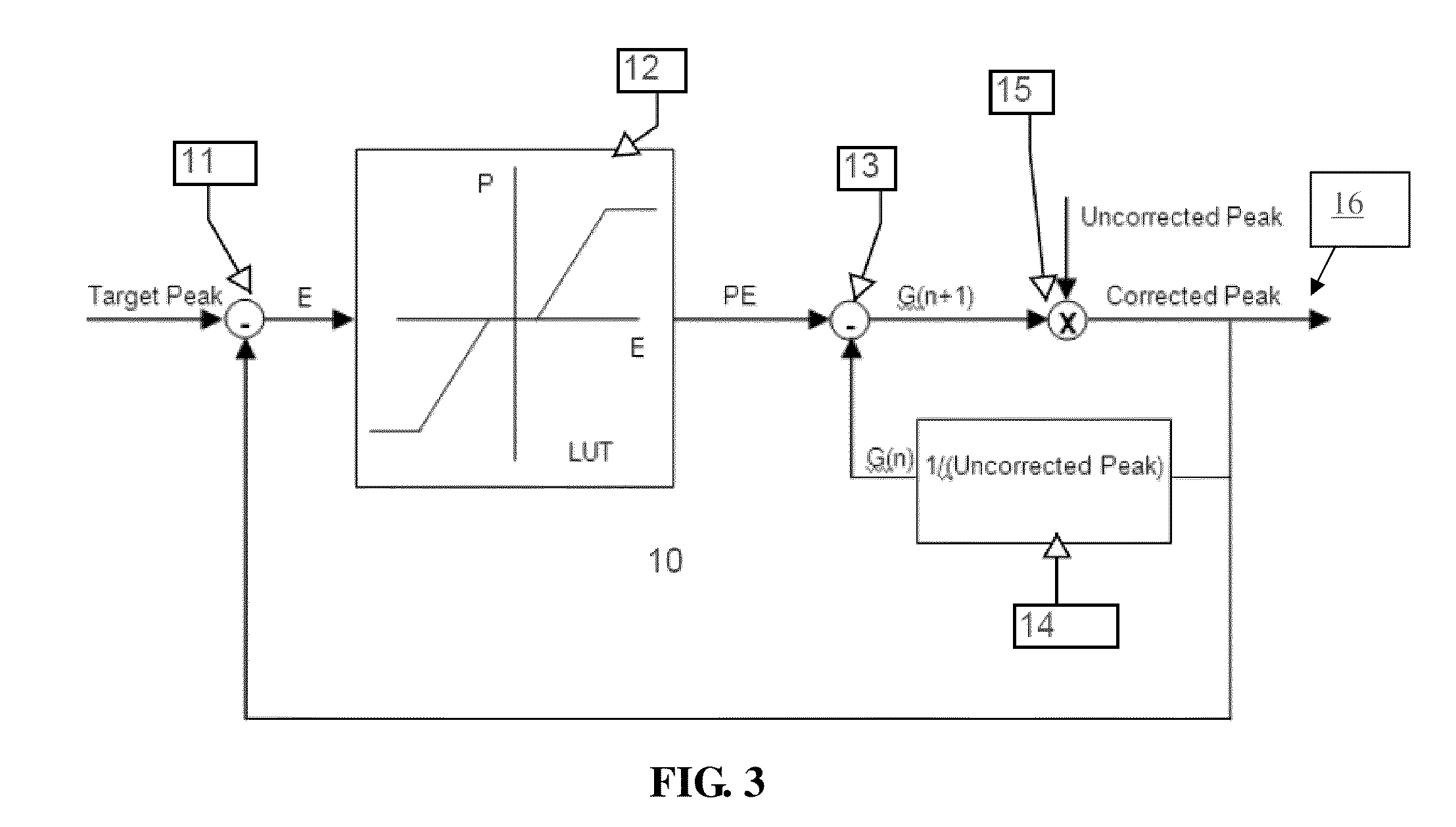Real-time gain compensation for photo detectors based on energy peak detection
a photo detector and real-time gain technology, applied in the field of nuclear medical imaging, can solve the problems of inability to avoid inability to achieve temperature stabilization and gradient shielding engineering solutions, and inability to achieve localized heating induced by the gradient of mr, etc., to achieve the effect of reducing noise, reducing noise, and reducing nois
- Summary
- Abstract
- Description
- Claims
- Application Information
AI Technical Summary
Benefits of technology
Problems solved by technology
Method used
Image
Examples
Embodiment Construction
[0023]Preferred embodiments will be described more fully hereinafter with reference to the accompanying drawings. Other embodiments are contemplated in many different forms and this disclosure should not be construed as limited to the embodiments set forth herein; rather, these embodiments are provided so that this disclosure will be thorough and complete, and will fully and clearly convey the scope of the disclosure to those skilled in the art. In the drawings, like numbers refer to like elements.
[0024]FIG. 3 illustrates an exemplary embodiment including closed-loop control system 10. In this embodiment, a target energy peak can first be determined to be a constant bin value, for example, bin 128, or may be determined during a calibration process in which 511 keV events can be acquired. The feedback of the control system can be the energy peak position bin measured from energy histogramming for a certain amount of events. The bin corresponding to the detected energy peak is then kn...
PUM
 Login to View More
Login to View More Abstract
Description
Claims
Application Information
 Login to View More
Login to View More - R&D
- Intellectual Property
- Life Sciences
- Materials
- Tech Scout
- Unparalleled Data Quality
- Higher Quality Content
- 60% Fewer Hallucinations
Browse by: Latest US Patents, China's latest patents, Technical Efficacy Thesaurus, Application Domain, Technology Topic, Popular Technical Reports.
© 2025 PatSnap. All rights reserved.Legal|Privacy policy|Modern Slavery Act Transparency Statement|Sitemap|About US| Contact US: help@patsnap.com



